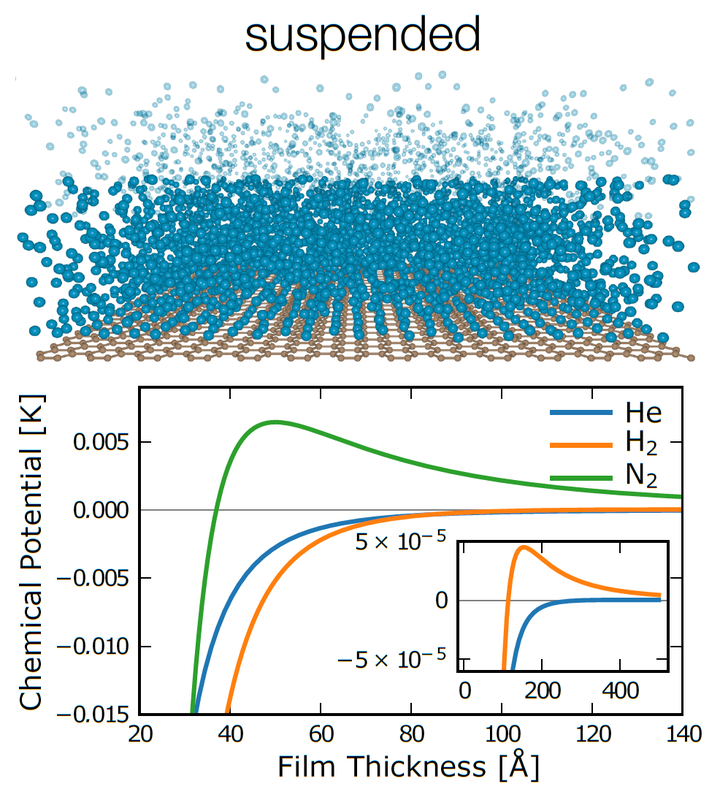 Wetting Instabilities on Graphene Chemical potential dependence in reference to bulk for thickness of liquid films on suspended graphene. This amazing facsimile of a theoretical possibility posed by Landau and Lifshitz is a case of wetting where a stable film of finite thickness only forms below the zero crossing.
Wetting Instabilities on Graphene Chemical potential dependence in reference to bulk for thickness of liquid films on suspended graphene. This amazing facsimile of a theoretical possibility posed by Landau and Lifshitz is a case of wetting where a stable film of finite thickness only forms below the zero crossing.Abstract
We investigate wetting phenomena near graphene within the Dzyaloshinskii-Lifshitz-Pitaevskii theory for light gases of hydrogen, helium, and nitrogen in three different geometries where graphene is either affixed to an insulating substrate, submerged or suspended. We find that the presence of graphene has a significant effect in all configurations. When placed on a substrate, the polarizability of graphene can increase the strength of the total van der Waals force by a factor of 2 near the surface, enhancing the propensity towards wetting. In a suspended geometry unique to two-dimensional materials, where graphene is able to wet on only one side, liquid film growth becomes arrested at a critical thickness, which may trigger surface instabilities and pattern formation analogous to spinodal dewetting. The existence of a mesoscopic critical film with a tunable thickness provides a platform for the study of a continuous wetting transition, as well as the engineering of custom liquid coatings. These phenomena are robust to some mechanical deformations and are also universally present in doped graphene and other two-dimensional materials, such as monolayer dichalcogenides.